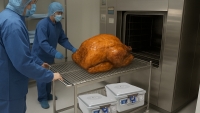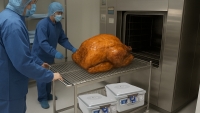Penny Wise and Pound Foolish
When budgets are tight, people sometimes look for quick fixes to save on immediate costs. Unfortunately, they will end up being sorry if what looks like a less expensive product costs more in the long run.
Keep Cleaning with Soap and Water
Cleaning helps prevent infection by physically removing germs, dirt, and other debris from surfaces and objects. This removal significantly reduces the number of germs available to spread, making it less likely that individuals wi
A Formula for Success for SPD
We just returned from the HSPA Conference in Louisville Kentucky and learned a few things that can be improved for safe and effective medical device reprocessing. One that is top of mind was water quality...
Sustainability and Healthcare Go Hand in Hand
This weekend, both of my coffee pots died. They weren’t cheap. They ground the coffee beans and even made cappuccino if we used the frothier. Both were the same popular brand purchased approximately three years ago...
Don't blame my baby: It could be your reused water
At Case Medical, we recycle the water we use for production purposes like anodizing and passivating our metal containers, trays, and metal component parts...
Filtration: Water Treatment Without Harm
Nature works to filter and release water over time – for free! Soil layers, wetlands, and even the root systems of plants like mangroves act as natural filters, removing pollutants and sediments...
The Mystery of the White Mist: Finally Solved
Many of us have tried to solve the troubling mystery of the “white mist” or “white powdery residue” found on the surfaces of medical devices. We have lists of possible causes and contributing factors, but how to avoid it remains a mystery to many, until now...
Follow the Recipe for Successful Outcomes
Last week, I introduced you to a novel solution and process for infection prevention for devices potentially exposed to TSE (infectious prion proteins). While Case Medical spent a decade discovering how enzymatic cleaners can do more than remove soil from contaminated devices, controlling the variables is just as important as...
Persistent Prions: An Ounce of Prevention is Worth a Pound of Cure
The central role of the Sterile Processing Department (SPD) is to decontaminate surgical instruments for patient care procedures. By carefully following cleaning and sterilization protocols for used devices, the SPD plays a critical role in infection prevention. However, not all infectious agents are created equal.
Saving Safer Choice: A Call To Action
According to OSHA, hazardous chemicals are prevalent in Central Sterile Supply (SPD). Examples include concentrated liquids with extreme pH levels, sterilization liquids and gases, plasma vapors, and other disinfecting liquids and aerosols...














